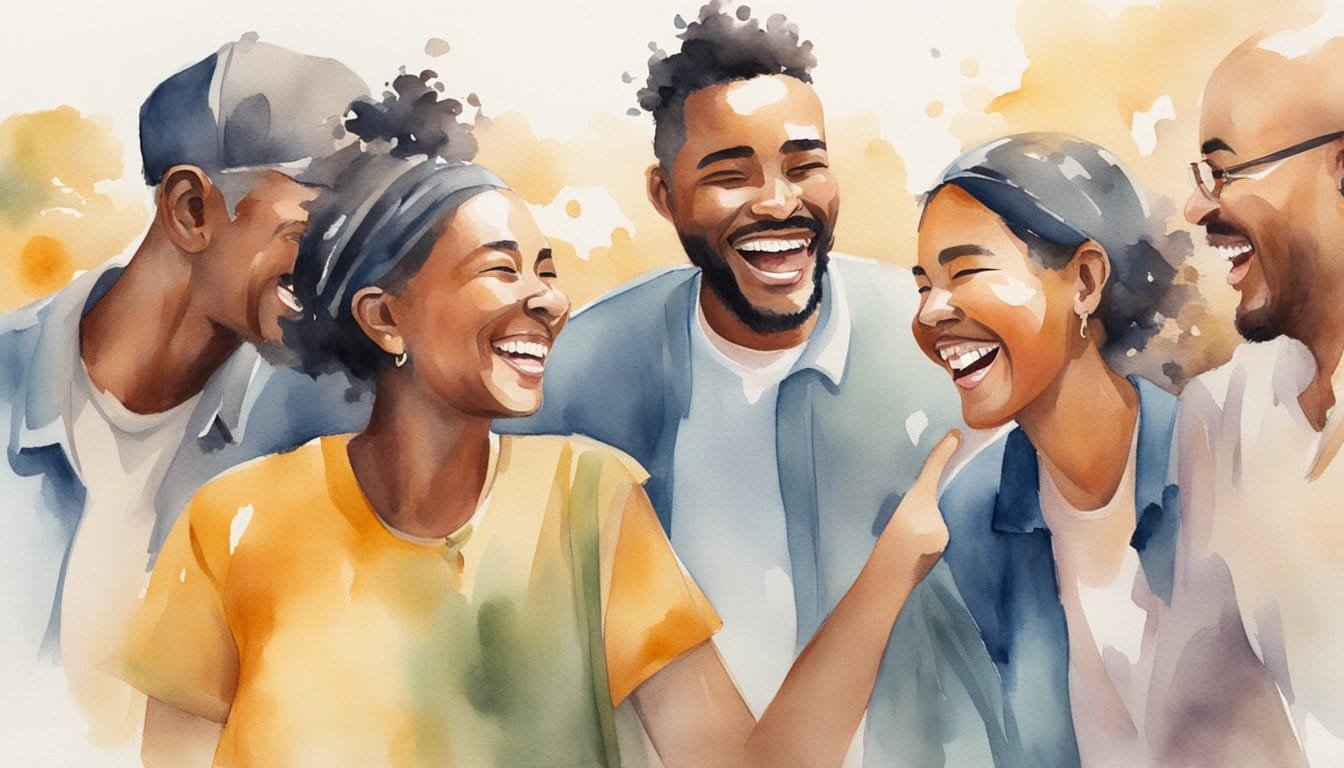The Science of Laughter
Laughter is a complex human response that engages numerous neurochemical and physiological processes. It plays a significant role in not just social interactions, but also in our overall well-being and has roots deep in our evolutionary past.
Neurological Mechanisms
Neurologically, laughter is an intricate behavior that involves a symphony of brain areas. The prefrontal cortex, which manages complex social behaviors, works in conjunction with the limbic system, responsible for emotional regulation. Furthermore, the release of endorphins triggers positive feelings and sometimes even a euphoric state.
Health Implications
The act of laughing is a mini workout for the heart and abdominal muscles and has been linked to various health benefits. Engaging in laughter can reduce stress hormone levels, thus aiding in bolstering the immune system. It’s believed to improve vascular function and decrease the risk of heart disease by enhancing blood flow.
Evolutionary Perspectives
From an evolutionary perspective, human laughter may have served as a mechanism for social bonding and communication. It indicates a shared understanding and helps to reinforce group cohesion and trust. Anthropologists and evolutionary biologists suggest that this ability to laugh has played an important role in human social evolution, acting as a non-verbal language that pre-dates speech.
Social and Psychological Aspects

Laughter serves as a key player in the mosaic of human social experience, intertwining humor’s impact with the glue of social bonds.
Emotional and Social Functions
Laughter often erupts as a spontaneous expression of joy, but its roots go deeper than momentary amusement. It’s a social signal that fosters trust and bonding in relationships. Groups use laughter to navigate social interaction, reinforcing a sense of community and belonging. For example, shared laughter can act as a non-verbal cue that helps strengthen social bonds, creating a feeling of safety and connection among individuals.
Humor and Incongruity
Humor often emerges from the meeting of expected and the unexpected, a concept known as incongruity. Laughter can result when this clash of ideas tickles the brain into recognizing the absurdity. The cognitive process behind finding a joke humorous involves resolving an incongruity, leading to a humorous reaction. This experience not only lightens the mood but can also reduce anxiety and tension, enhancing one’s enjoyment of social encounters. For more on laughter in diverse situations, consider reading about A new theory of laughter.
Understanding the social and psychological facets of laughter is not merely an academic exercise, it is essential for appreciating the depth of human social interactions. Whether forging new friendships or reinforcing old ones, in moments of levity or love, laughter is integral to how people connect and thrive within communities.
Cultural and Communicative Dimensions

When exploring why people laugh, it’s crucial to consider both the cultural context and the role of communication. While laughter is a universal phenomenon, its triggers and interpretations can vary widely among different cultural groups.
Language and Expression
Laughter isn’t just a reaction to humor, but a form of language and expression itself. It plays a pivotal role in social bonding, often serving as a bridge in conversations and interaction among individuals. In every culture, laughter can emerge from playful speech or a spontaneous vocalization, revealing a person’s sense of humour. Research indicates that this phenomenon crosses cultural divides, forming a common thread of human vocal communication across societies. For insight into laughter’s role in expression, see how societal norms influence laughter and culture.
Humor in Media and Entertainment
Media and entertainment frequently harness the power of laughter to connect with their audience. Comedic content, whether in the form of a beloved comedian on Twitter or the portrayal of heroes in popular films, is crafted to resonate across different cultures. Laughter experts point out that even in audiovisual texts like movies, the translation of humor can be challenging but crucial for engaging viewers. These adaptations often involve tailoring content to diverse audiences while maintaining the original’s essence. The transcultural fancy of humour in subtitles is a topic of interest, as found in this study on translating humor in movie subtitles.

